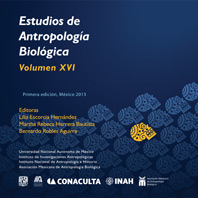New strategy in the estimation death age: histomorphologic application in the archaeology of Mayan Lowlands and a case study of Copan, Honduras archaeological site
DOI:
https://doi.org/10.22201/iia.14055066p.2013.56686Keywords:
histomorphology, bioarchaeology, dynasty, Maya, Copan, HondurasAbstract
The cronovital estimation of damaged bones is one of the biggest and difficult challenges to physical anthropology around archaeological human remains, especially in the archaeology of the Maya lowlands which suffer the rapid deterioration of all organic materials, including human remains. This paper introduces a new strategy of microscopic estimation of age at death, which is adapted to the destructive conditions prevailing there. The procedure examines three components in the analysis: osteons selective counts per area to obtain osteons density (opd), the cortical area in the cross section of rib, and the qualitative evaluation of the microstructures therein. Histological procedures were applied in the study of two damaged bones from the archaeological site of Copan, Honduras. The burials were found in the central quadrant 10J, and offerings allow us to consider one of them as a member of the local dynasty. In both cases, our results improve conventional determinations and provide new perspectives for the analysis of damaged remains.
Downloads
Downloads
Published
How to Cite
Issue
Section
License

http://creativecommons.org/licenses/by-nc-nd/4.0/


